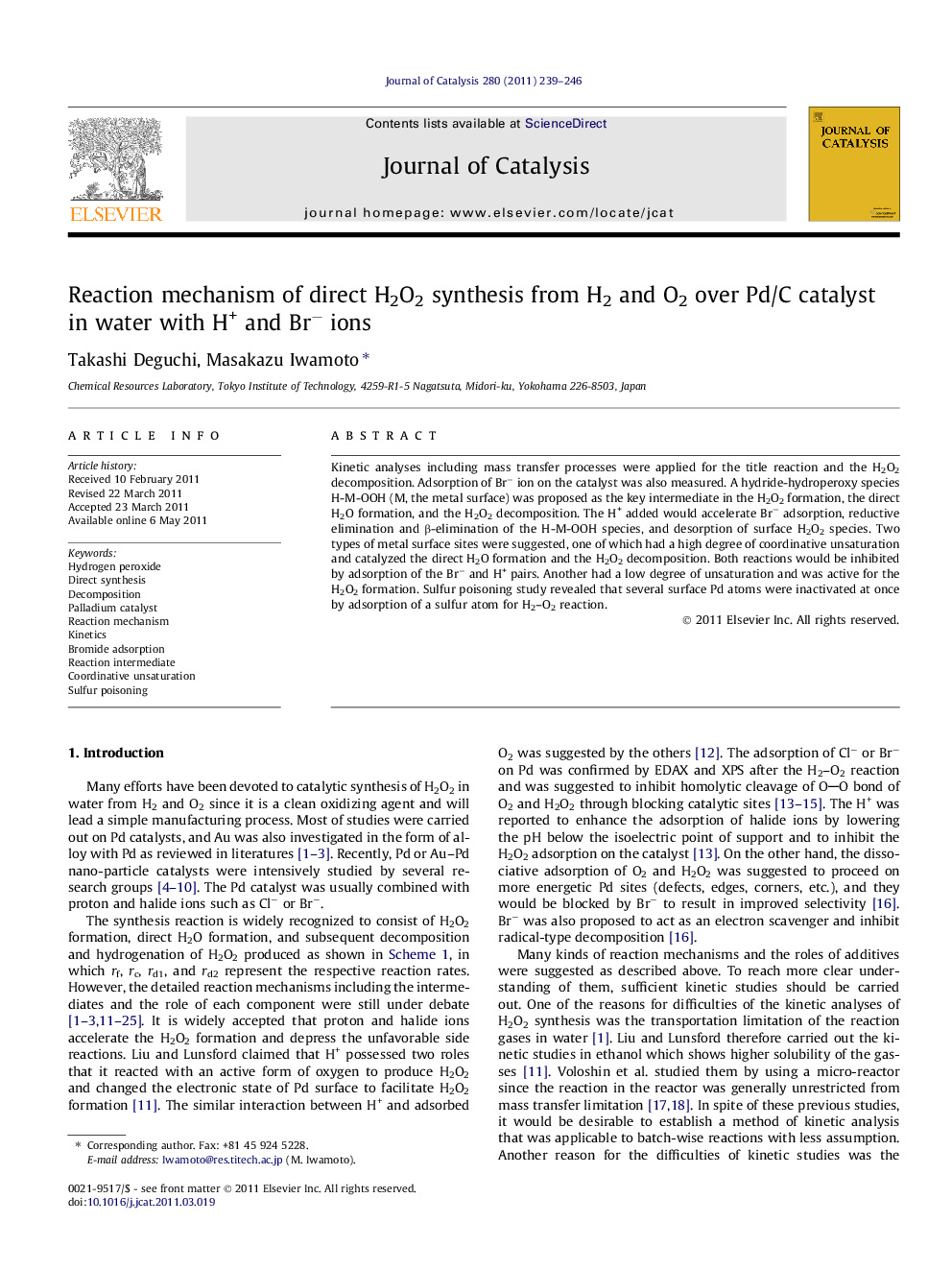| کد مقاله | کد نشریه | سال انتشار | مقاله انگلیسی | نسخه تمام متن |
|---|---|---|---|---|
| 61548 | 47587 | 2011 | 8 صفحه PDF | دانلود رایگان |

Kinetic analyses including mass transfer processes were applied for the title reaction and the H2O2 decomposition. Adsorption of Br− ion on the catalyst was also measured. A hydride-hydroperoxy species H-M-OOH (M, the metal surface) was proposed as the key intermediate in the H2O2 formation, the direct H2O formation, and the H2O2 decomposition. The H+ added would accelerate Br− adsorption, reductive elimination and β-elimination of the H-M-OOH species, and desorption of surface H2O2 species. Two types of metal surface sites were suggested, one of which had a high degree of coordinative unsaturation and catalyzed the direct H2O formation and the H2O2 decomposition. Both reactions would be inhibited by adsorption of the Br− and H+ pairs. Another had a low degree of unsaturation and was active for the H2O2 formation. Sulfur poisoning study revealed that several surface Pd atoms were inactivated at once by adsorption of a sulfur atom for H2–O2 reaction.
Kinetic analyses of the direct H2O2 synthesis from H2 and O2 and the H2O2 decomposition on Pd/C catalyst in water containing H+ and Br− ions and adsorption measurement of Br− ion on the catalyst proposed a hydride-hydroperoxy species H-M-OOH (M represents the metal surface) to be the key intermediate in the H2O2 formation, the direct H2O formation, and the H2O2 decomposition.Figure optionsDownload high-quality image (77 K)Download as PowerPoint slideHighlights
► H-M-OOH (M: metal surface) was proposed as the key intermediate.
► Metal sites with higher or lower degree of unsaturation were suggested.
► The former would catalyze the direct H2O formation and the H2O2 decomposition.
► Both reactions on the site are inhibited by adsorption of the pairs of Br− and H+ ions.
► Sites with lower degree of unsaturation are effective for H2O2 synthesis.
Journal: Journal of Catalysis - Volume 280, Issue 2, 13 June 2011, Pages 239–246